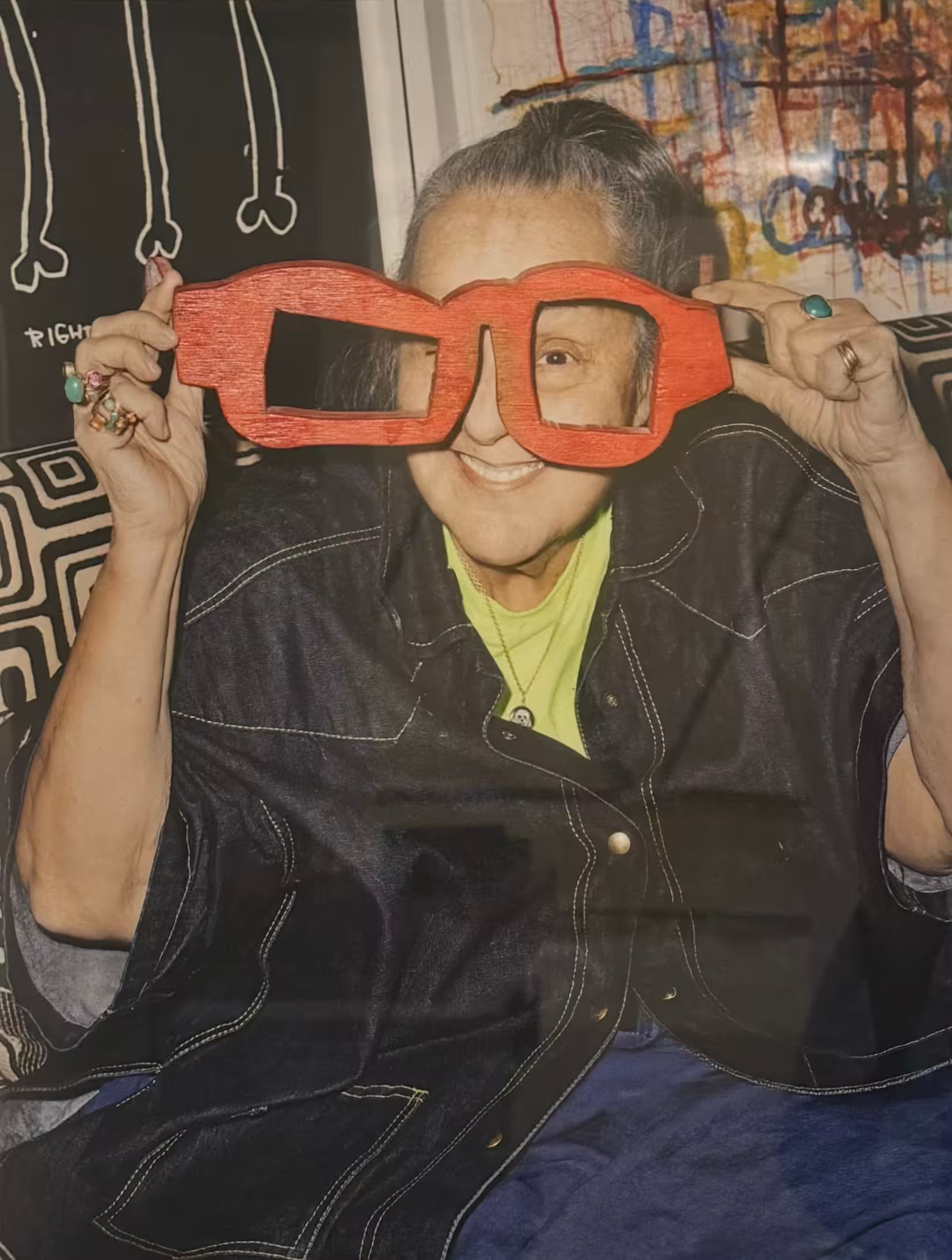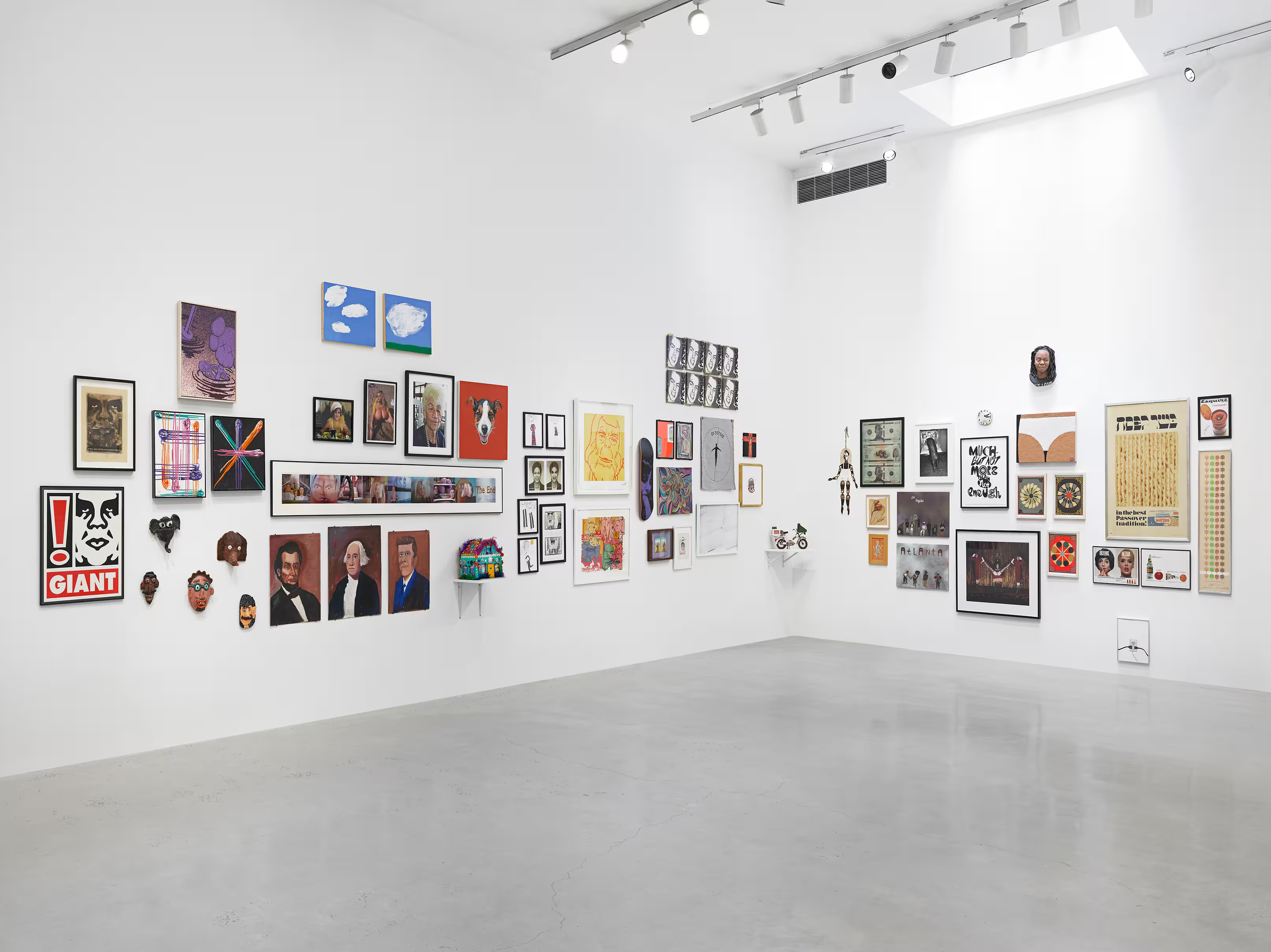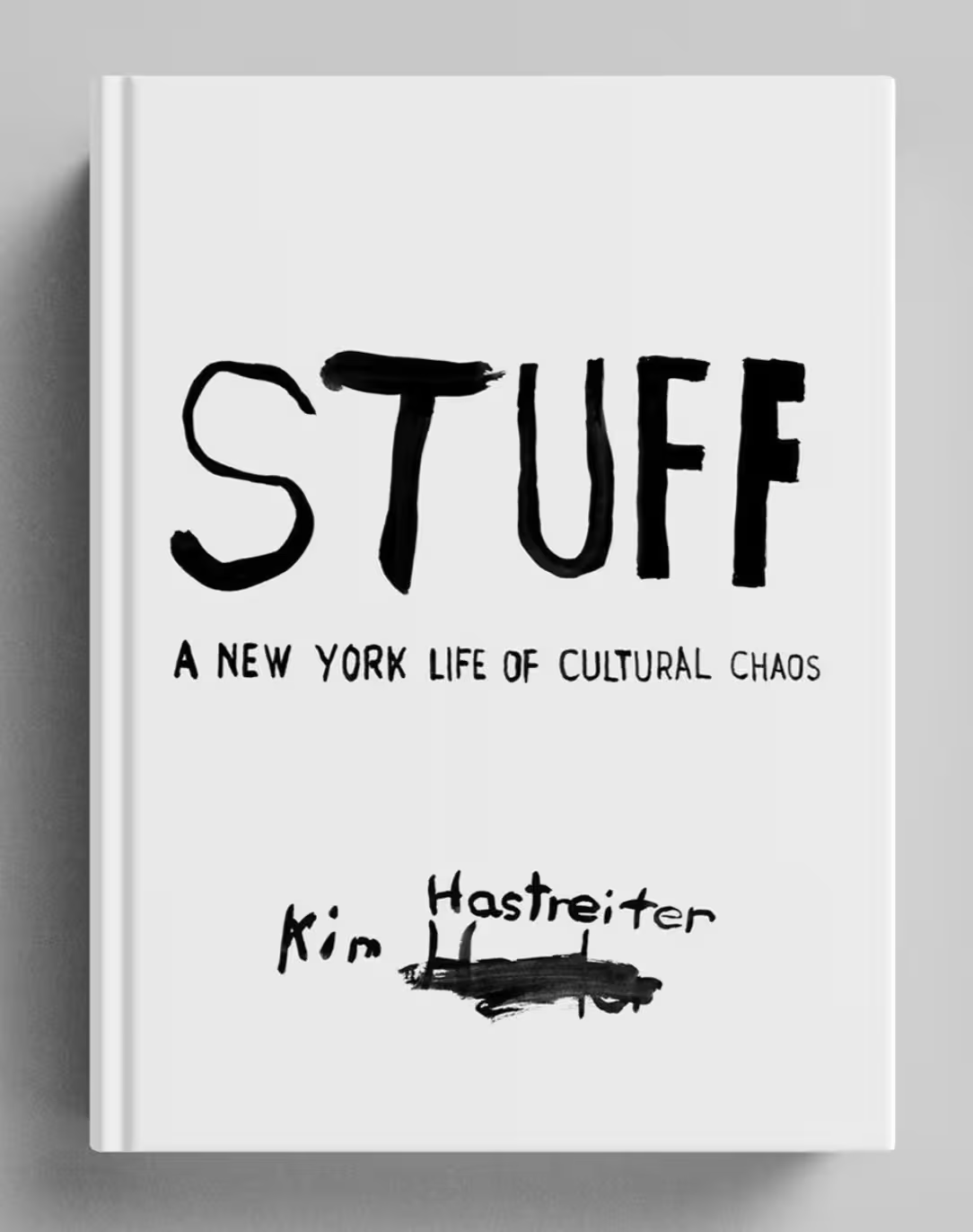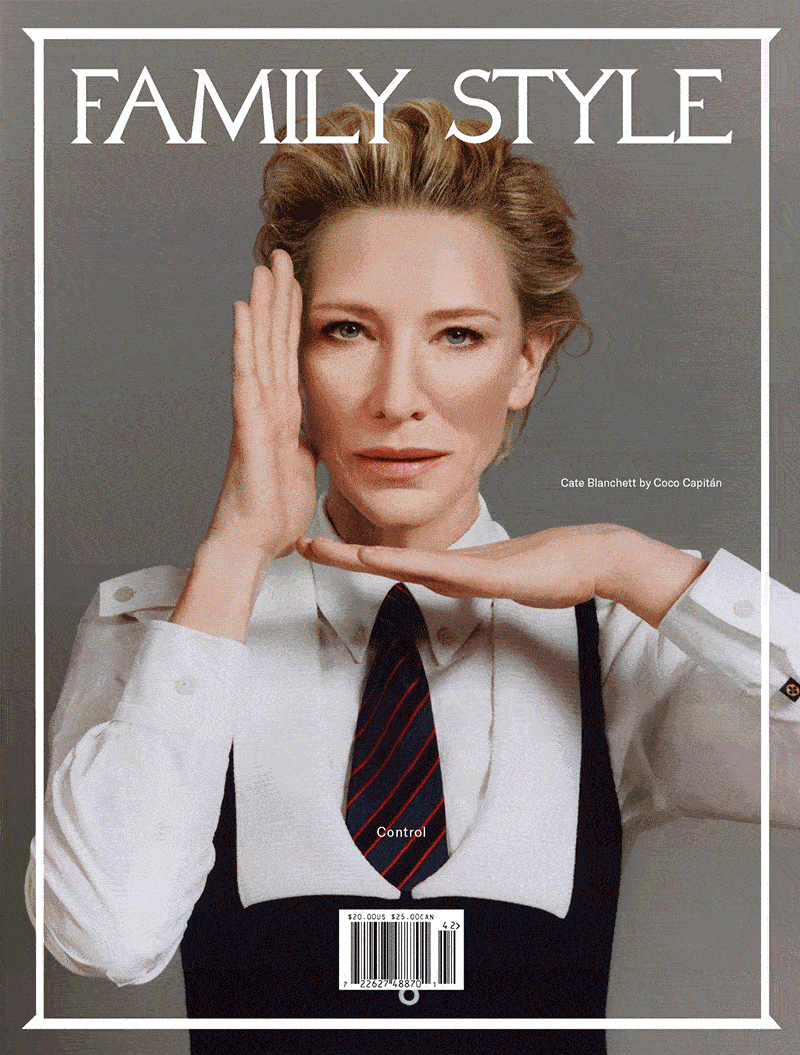
Kim Hastreiter. Photography by Jeremy Liebman. Image courtesy of Jeffrey Deitch
It’s befitting that magazine editors are savvy at making cool, memorable friendships—across generations, neighborhoods, creative areas, so forth. It’s those behind-the-scenes dynamics that keep things circulating—plucking up promising new talents, surfacing those unfairly overlooked, keeping the deserving in the spotlight. Culture stays fresh while its most recent histories are preserved in collective social memory—not to mention the published documentation that’s a direct result of their vocation. Everyone wins. Few are better examples of this than Paper founder Kim Hastreiter, who’s been the colorful anchor of her own cultural eddy for decades running. “You have to hunt for the truffles and find the geniuses and find the community and make a community build a community and that's where it is,” she says from her home off Washington Square Park, clad in thick-rimmed orange glasses and a camouflage button-down.
Just released, her debut memoir, Stuff: A New York Life of Cultural Chaos, offers a narrative of Hastreiter’s life and times, from her student days at Nova Scotia College of Art and Design and later CalArts, to her first job at Soho Weekly News, to launching Paper, and the many projects she’s taken on along the way. Co-published by Amazing Unlimited and Damiani Books, the book is anchored by her relationships as well as the many items of art and fashion she’s amassed throughout her time at the center of downtown New York City. Complementing this is an exhibition she's curated at Jeffrey Deitch—one of her many longtime collaborators—titled “My Amazing Friends,” which showcases works by 60 of her friends (plus a couple of her own pieces from her art-school days) whom she’s found particularly inspirational over the years.

Installation view of “My Amazing Friends” at Jeffrey Deitch, curated by Kim Hastreiter. Photography by Genevieve Hanson. Image courtesy of Jeffrey Deitch.
Take, for instance, Joey Arias—designated in Hastreiter’s text as best friend number one—whom she met while attending grad school at CalArts. The pair made the cross-country move to New York City together, briefly becoming roommates at a “dump” on Houston Street. Arias, a drag performance artist, has two pieces in the New York show: two variations of a cloth onto which his makeup is wiped off, both dubbed (Impressions of a Dream) Art Face Wipe, 2023–2025.
Another influence Hastreiter mentions in the book is her former CalArts professor John Baldessari. Prior to her move to New York, the legendary artist put in a good word for Hastreiter with his gallery contacts. “I moved to New York thinking, Oh, this is going to be easy. But not one girl in my class got into any galleries, only all boys. It was an all-boy thing. I was like, Well, fuck you,” says Hastreiter.

Kim Hastreiter, Stuff: A New York Life of Cultural Chaos, 2025.
Swallowing her disappointment, Hastreiter went dancing. She took refuge night after night at the Mudd Club where she discovered trends that intrigued her more than the uptight world of blue-chip galleries. “It was all merging together—fashion, art, and music,” she recalls. “I was like, This is better than going to Mary Boone. Rejection is kind of a good thing. It makes you do other stuff, you know?”
Another friend and early champion she highlights is Bill Cunningham, who first snapped her outfits while she went into work at Betsey Johnson’s early brick-and-mortar store, Betsey Bunky Nini, on the Upper East Side. (Hastreiter recalls high-society women including Jackie Kennedy asking her for her style opinions as she was enduring the mornings-after various benders.) A couple of candids from those days are featured in Stuff, along with Cunningham’s photos of Hastreiter decades down the line—clearly, an unwavering fan of her flamboyant style.

Image courtesy of Kim Hastreiter.
The legendary street style photographer eventually hooked Hastreiter up with her first “real job” as style editor at Soho Weekly News. “My idea of fashion was all these designers with names like Animal X. I didn't go to Ralph Lauren, I didn't go to Calvin Klein. I wasn't interested in any of that, but I had to put 10 pages together every week,” she recalls. “So what did I do? I called all my artist friends. I was going to Club 57, so that's when I met Keith [Haring] and Kenny [Sharf] and [Tseng] Kwong Chi and John Sex and Ann Magnuson. Keith modeled for me...I’d come up with these crazy ideas for these pieces I would do. It was not normal.” When the weekly paper was acquired by a straight-laced British media corporation, the staff rebelled. “Everybody made their lives miserable,” she says, still with a hint of glee. “We wouldn't come in until 1 p.m. They were all like, ‘Where is everybody?’ The day they closed it, everybody just took the furniture. I'll never forget it. People were walking out with Xerox machines.” The downfall gave way to the rise of Paper, which Hastreiter launched with her former managing editor David Hershkovits.
Companioning Stuff, Hastreiter’s exhibition at Deitch bookends decades of collaborations. Their first project, “Antidote to Fashion Week,” took place at Deitch’s Grand Street Space in 2001, and featured a Hell’s Angel-style tattoo artist named Coop, who Hastreiter had commissioned earlier to cover couture for Paper. “That was the main show with the Coop couture and it was these women with the biggest boobs in the world wearing Gaultier and Dior,” she explains. “I wanted to do something that was kind of anti-fashion week, because I hated fashion week.” A “fashion wrestling” series featured greased-up models in gowns wrestling each other for prizes. Then new to town, Waris Ahluwalia offered free turban wrappings. In a sequel to “Antidote” in 2002, another designer handed out paper goodie bags that contained live cockroaches. “I’m attracted to weird, offbeat stuff,” Hastreiter writes in Stuff. “I will often find something and stare at it for quite some time, trying to figure out whether it’s fabulous or hideous." Though central to more scenes and underground movements than anyone can really tabulate, she doesn’t really think of herself as someone necessarily at the locus of things. “I've always been an outsider. Paper was an outsider. It's hard to have a career as an outsider because you're not in any one thing—not in the design world, the art world, the fashion world, the publishing world. This is the shit that moves stuff forward. Especially when times are dark, like now. Artists have to lead the way.”
“My Amazing Friends,” curated by Kim Hastreiter, is on view at Jeffrey Deitch through Feb. 22 at 76 Grand Street, New York, New York, 10013. STUFF. A New York Life of Cultural Chaos can be purchased here.













.avif)

